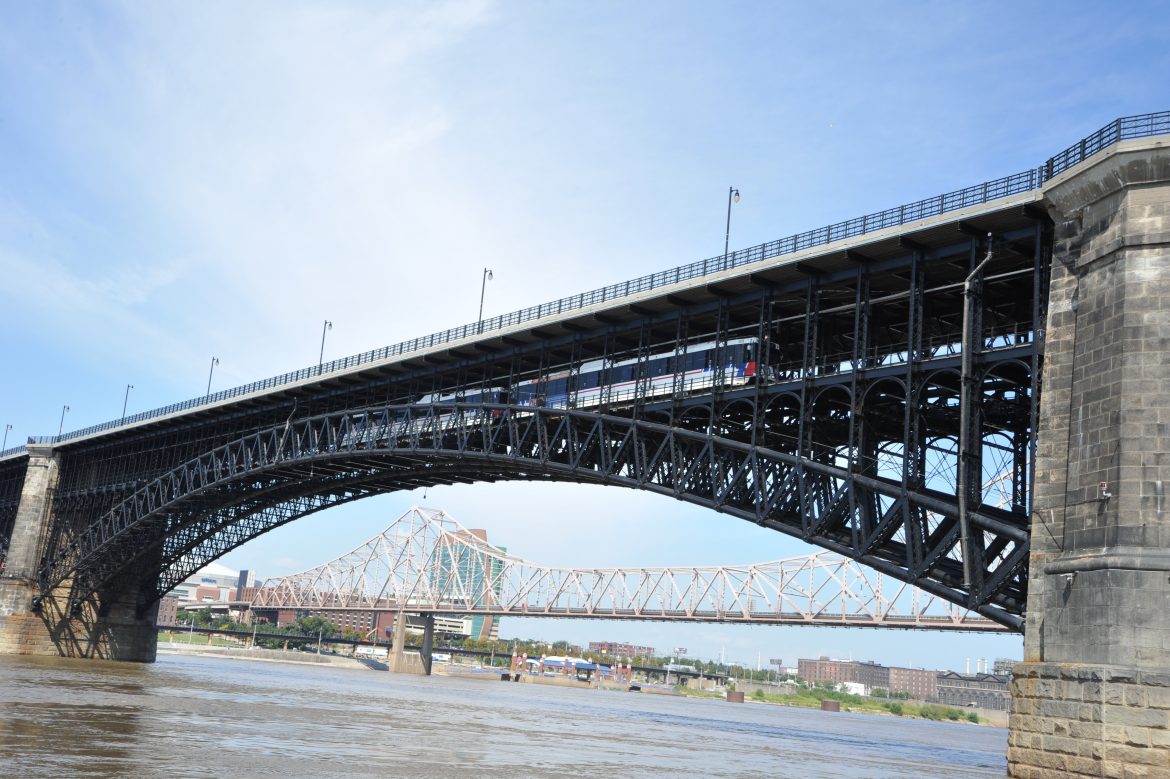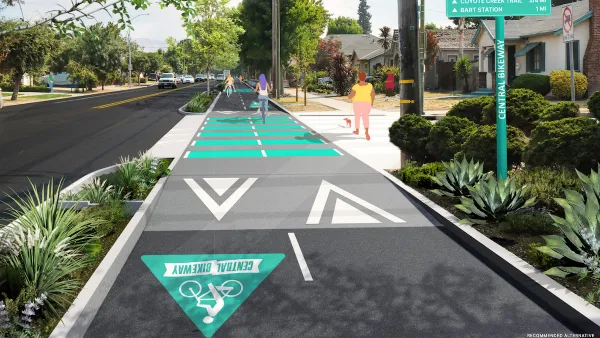Remember President Obama's 2009 economic stimulus program? Add another completed project to the program's successes: the restoration of the multi-modal 1874 iconic Eads Bridge connecting St. Louis and East St. Louis, Ill. over the Mississippi River.

A celebration of the completion of the four-year, $48 million rehabilitation of the 142-year-old Eads Bridge, seen below with a St. Louis Metrolink light rail train running on the lower deck, occurred on October 7.
"The Eads Bridge, named for designer and builder James Eads, was the world's longest when built, the first using all steel for its arched spans, the first to exclusively cantilever supports, according to a Greatriverroad.com visitor's guide," reports AASHTO Journal.
Federal funds covered 91 percent of the project cost, said [Bi-State Development, which co-owns the bridge with the city of St. Louis], including $27 million coming from American Recovery and Reinvestment Act (ARRA) funds and $4.8 million from a federal grant to St. Louis. Local funds covered the non-federal portion.
"Eads Bridge is the world's first steel-truss bridge, and an engineering marvel," according to the St. Louis Cultural Resources Office. It was dedicated as as the city's first National Historic Landmark in 1964.
The October 7 celebration was also covered by the St. Louis Pubic Radio.
In addition to motor vehicles and 300 light rail trains daily, pedestrians and cyclists also cross on the top deck.

Also on Planetizen:
"With Mayoral Support—What's Next for Proposed MetroLink Extension in St. Louis," June 16, 2016.
FULL STORY: St. Louis Bridge Gets Major Rehab, Facelift After 142 Years Aided by Stimulus Funds

Planetizen Federal Action Tracker
A weekly monitor of how Trump’s orders and actions are impacting planners and planning in America.

In Praise of Analog Cities: Futureproofing in a Time of Crisis
I didn’t need a pandemic or a war to teach me that smart cities weren’t the future — but it sure drove the message home.

Silicon Valley ‘Bike Superhighway’ Awarded $14M State Grant
A Caltrans grant brings the 10-mile Central Bikeway project connecting Santa Clara and East San Jose closer to fruition.

A Vision for the Future: LA County Releases Draft Sustainability Plan
Los Angeles County has released the draft 2025 OurCounty Sustainability Plan — shaped by community input — and is inviting public feedback through August 22 to help guide the County’s path toward a more sustainable, equitable, and resilient future.

Honoring Elders: California Tribe Breaks Ground on Affordable Housing
The Fernandeño Tataviam Band of Mission Indians is launching its first senior housing project in Los Angeles County, creating 26 affordable units to serve Native elders and address longstanding housing inequities.

Which San Diego County Cities Are Building New Housing?
Chula Vista permitted the most new housing units per capita, while El Cajon is adding the least.
Urban Design for Planners 1: Software Tools
This six-course series explores essential urban design concepts using open source software and equips planners with the tools they need to participate fully in the urban design process.
Planning for Universal Design
Learn the tools for implementing Universal Design in planning regulations.
Heyer Gruel & Associates PA
Yukon Government
New Jersey Institute of Technology
Mpact (founded as Rail~Volution)
City of Camden Redevelopment Agency
City of Norman, Oklahoma
City of Portland
City of Laramie




























